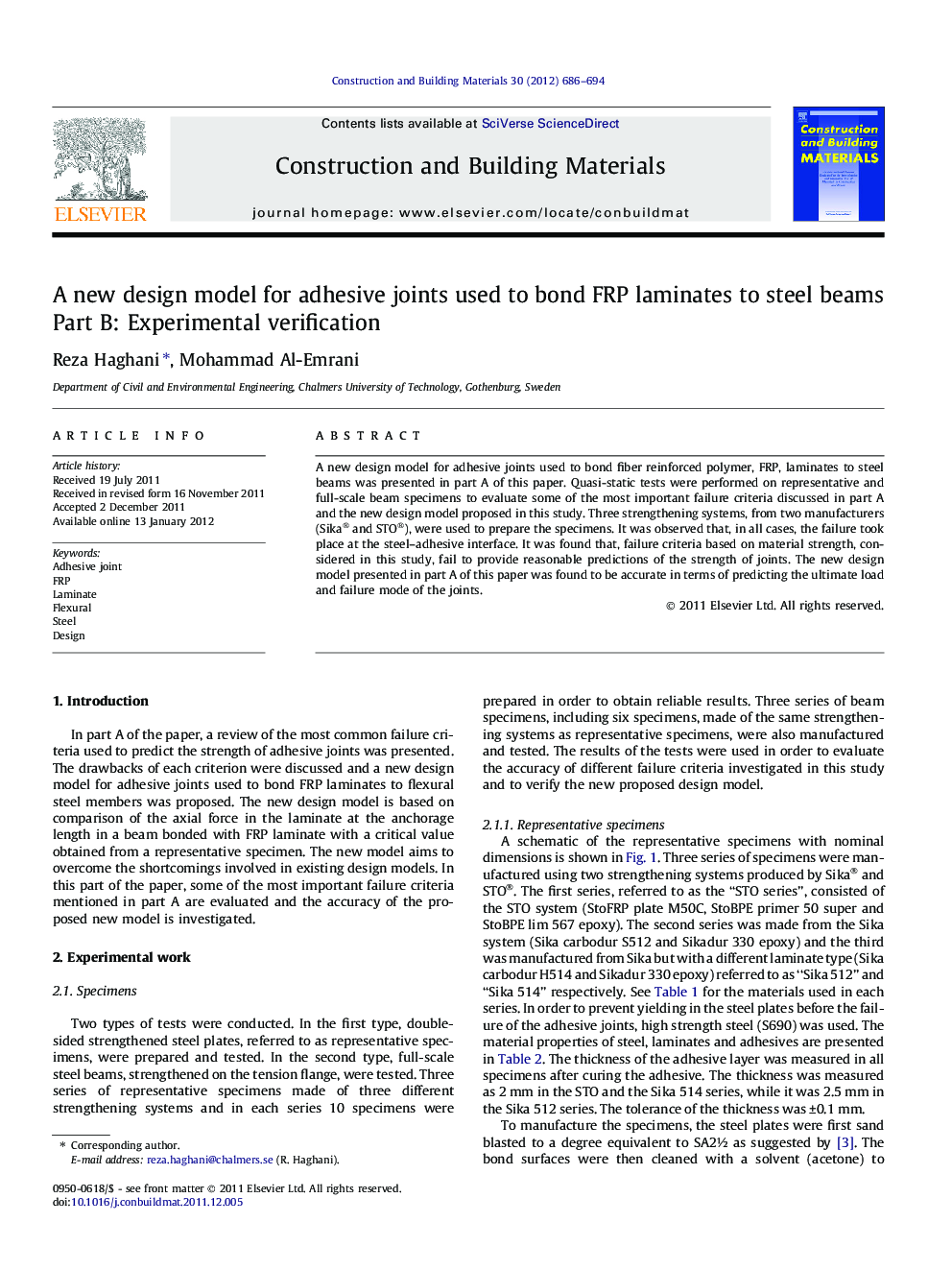| Article ID | Journal | Published Year | Pages | File Type |
|---|---|---|---|---|
| 258571 | Construction and Building Materials | 2012 | 9 Pages |
A new design model for adhesive joints used to bond fiber reinforced polymer, FRP, laminates to steel beams was presented in part A of this paper. Quasi-static tests were performed on representative and full-scale beam specimens to evaluate some of the most important failure criteria discussed in part A and the new design model proposed in this study. Three strengthening systems, from two manufacturers (Sika® and STO®), were used to prepare the specimens. It was observed that, in all cases, the failure took place at the steel–adhesive interface. It was found that, failure criteria based on material strength, considered in this study, fail to provide reasonable predictions of the strength of joints. The new design model presented in part A of this paper was found to be accurate in terms of predicting the ultimate load and failure mode of the joints.
► Failure of the joints used in this study was governed by debonding at steel–adhesive interface. ► Design models, with assumption of adhesive failure, do not provide accurate failure load predictions. ► The proposed design model in this study does not need stress analysis of the joints to be designed. ► The proposed design model predicts the failure load and mode of failure with a good accuracy.
